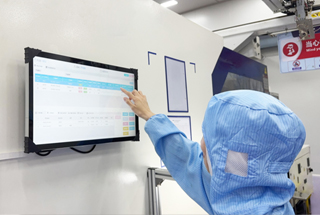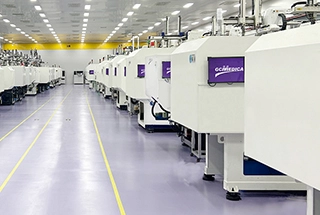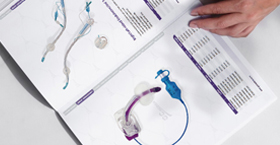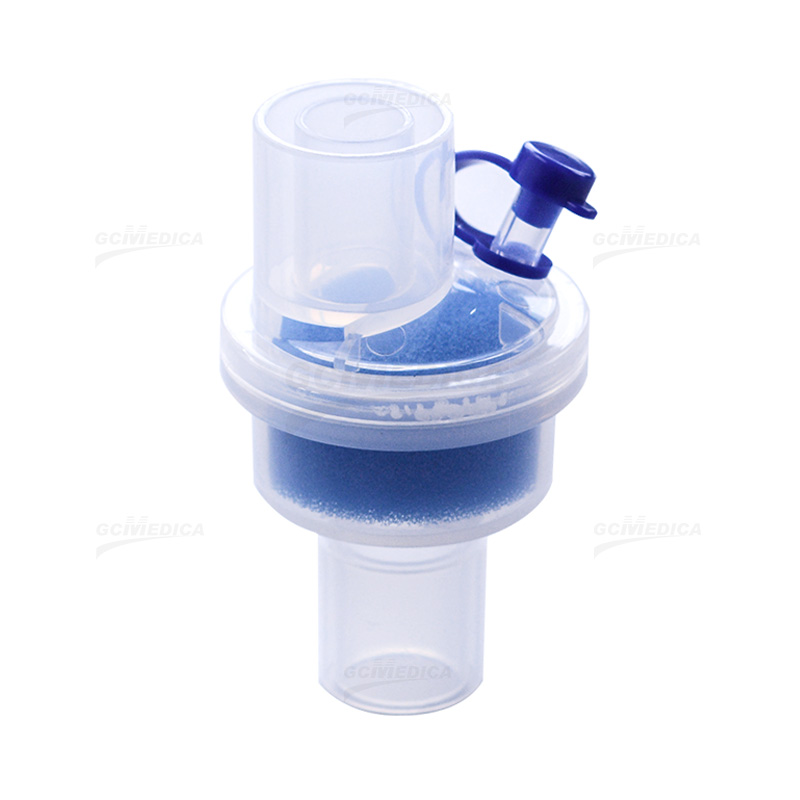Heat–Moisture Exchangers (HMEs) designed for anesthetic circuits are passive devices that conserve a patient’s exhaled heat and moisture while providing bacterial and viral filtration during general anesthesia. By capturing warmth and humidity from exhaled gases and returning them to the inspired gas stream, anesthetic HMEs help maintain mucosal integrity, reduce airway irritation, and minimize the need for active humidification systems. They are especially useful in short‑ to medium‑duration procedures, during patient transport between operating rooms and intensive care units, and in settings where active humidifiers may be impractical or costly.
Design and Working Principle
Anesthetic HMEs consist of a hygroscopic or hydrophobic matrix—frequently made of foam, paper, or membrane material—combined with a micro‑particle filter. On exhalation, the matrix absorbs heat and moisture; on inhalation, these reserves are released back into the gas flow. Simultaneously, the filter element removes ≥ 99.9 % of airborne bacteria and viruses, creating a dual‑function device.
Clinical Applications in Anesthesia
Short Procedures (< 2 hours): Ideal for brief surgeries where active humidification setup time outweighs benefits.
Ambulatory Surgery: Simplifies circuit assembly and reduces equipment bulk.
Patient Transport: Maintains humidification during transfer on portable ventilators or manual resuscitators.
Emergency and Field Anesthesia: Passive design functions without electricity or water reservoirs.
Key Advantages
Rapid Setup: “Plug‑and‑play” integration with standard 15 mm circuit connectors shortens anesthesia machine turnover time.
Cost Savings: Eliminates need for heated wires and water reservoirs, reducing maintenance and infection control expenses.
Reduced Condensation: Compared with heated humidifiers, HMEs lower the risk of circuit water buildup, which can occlude filters or tracheal tubes.
Portability: Lightweight and disposable, making them well‑suited for mobile or resource‑limited environments.
Below is a comparison of typical anesthetic HME parameters:
| Parameter | Description | Typical Value |
|---|---|---|
| Filter Efficiency | Percentage of bacteria/virus removal in inspired gas | ≥ 99.9 % |
| Dead Space Volume | Internal volume not participating in gas exchange; critical for CO₂ clearance | 30–50 mL |
| Resistance | Pressure drop at a standard flow rate (e.g., 30 L/min); lower values ease spontaneous breathing | 1.5–2.5 cm H₂O at 30 L/min |
| Humidity Output | Amount of water vapor returned to inspired gas per liter | 25–28 mg H₂O/L |
| Connector Type | Standardized fittings for patient and machine limbs (e.g., ISO 15 mm) | 15 mm male/female |
| Recommended Use Duration | Maximum in‑circuit time before moisture saturation or increased resistance necessitates replacement | 4–6 hours |
Selection Considerations
When choosing an anesthetic HME, clinicians must weigh dead space against patient tidal volume—particularly in pediatric or low‑tidal‑volume cases, where even 30 mL dead space can be significant. Resistance should be minimal to avoid increased work of breathing during spontaneous ventilation. In infection‑prone environments or during aerosol‑generating procedures, HME models with integrated electrostatic filters are preferred. Finally, verify compatibility with anesthesia circuit adapters and intended duration of use to ensure that the device’s moisture capacity matches procedural length.
In summary, heat–moisture exchanger filters for anesthesia offer a simple, efficient method to preserve airway humidity and provide microbial protection without the complexity of active humidification systems. Their ease of use, cost effectiveness, and portability make them essential components of modern anesthetic practice.
Related products
| Heat Moisture Exchange (HME) > | |
| Eco-mini HME > |


 Français
Français Español
Español Products
Products

 About Us
About Us













